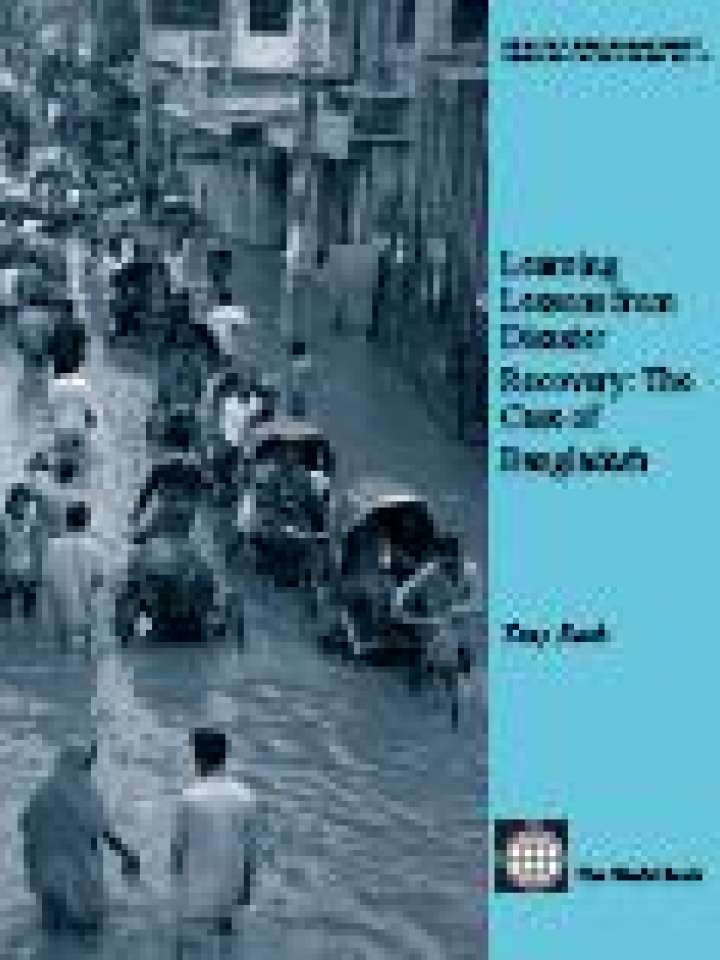Learning lessons from disaster recovery: the case of Bangladesh
This report focuses on lessons from the recovery period following the 1998 floods. Bangladesh is a country that is highly vulnerable to a number of hazards including cyclones, droughts, flooding and earthquakes. During the 2004 monsoon season, Bangladesh experienced severe flooding across 33 districts that affected approximately 36 million people and killed nearly 800 people. Over 2 million acres of agricultural land was damaged, and approximately 4 million houses were either partially damaged or completely destroyed. Total damage caused by the floods was estimated at US$2.28 billion, with the most severe losses concentrated in the housing, transport, and agricultural sectors. Additional flooding occurred again in September, paralyzing parts of Dhaka and inundating south-western districts that were not affected by the first monsoon emergency. In addition the December 26, 2004 tsunami in the Indian Ocean also affected Bangladesh’s coastline, causing relatively minimal damage and several deaths. It is hoped that the findings of this study can contribute to the recovery efforts of the most recent events, and help to inform efforts for more effective risk reduction in the country. As indicated in this study, the impacts of these events suggest that several factors continue to contribute to the country’s vulnerability to disasters, including rapid urbanization, population growth, inadequate maintenance of infrastructure systems, and poor environmental management.
Explore further
